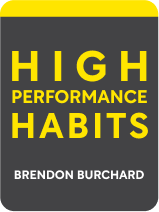

This article is an excerpt from the Shortform book guide to "High Performance Habits" by Brendon Burchard. Shortform has the world's best summaries and analyses of books you should be reading.
Like this article? Sign up for a free trial here .
Do you want to stay happy and positive no matter what? What are some things you can do to maintain a positive outlook 24/7?
Let’s face it: it’s not possible to stay happy and positive all the time. However, there are some practices that can help you cultivate a headspace that promotes joy over negativity.
Keep reading to find out how to stay happy and positive no matter what.
Finding Joy
The most powerful positive emotion is joy. If you can find joy within your work and personal life, other positive emotions will rise to the surface.
While you it’s not realistic to stay happy and positive 24/7, you can put yourself into a headspace that promotes joy over negative emotions. To do this, consider the following practices:
- Visualize positive feelings. Think about how you want to feel and visualize a scenario that generates positive feelings.
- Anticipate good outcomes. Rather than fearing for the worst, think about the best outcomes to decisions and projects.
- Imagine handling stressful situations in a positive way. This helps you respond positively when stress triggers an emotional response.
- Seek positivity. Actively look for opportunities to feel positive emotions such as gratefulness, curiosity, excitement, and joy.
- Spread positivity. When interacting with others, always look for ways to share positive emotions.
- Reflect on gratitude. Even in moments of frustration, think about all of the things that you’re grateful for.
Mental Triggers to Stay Happy and Positive
In addition to the above practices, develop new emotional triggers that create positive emotions rather than negative ones. The following are mental triggers you can develop to stay happy and positive all the time:
- Notification Triggers: Using your phone or a calendar app, set an alarm to go off multiple times a day. Label this alarm as a reminder to think about a positive emotion (e.g. “Be Grateful,” “Find Joy,” or “Think Positively”). When you see this notification, take a second to generate positivity.
- Door Frame Triggers: When you walk through a door frame, take a moment to consider what energy you want to bring into the room, and what you want to get from the experience.
- Waiting Triggers: When waiting in line, take a moment to check-in with how present you are on a scale from 1-10. If you’re below a 5, ask yourself what’s taking up space in your thoughts and try to bring yourself back to the moment.
- Touch Trigger: When you meet someone new, take a moment to interact with them in an appropriate, physical way. This could be a hug, a handshake, or a high-five. Physical interaction generates neurological responses that promote happiness.
- Gift Trigger: When something good happens, take a moment to recognize that positive interactions and outcomes are a gift. Use this gratitude to find ways that you can give back to those around you.
- Stress Trigger: When you feel stressed or anxious, first take a moment to breathe, then think about what you can do to solve the problem.

———End of Preview———
Like what you just read? Read the rest of the world's best book summary and analysis of Brendon Burchard's "High Performance Habits" at Shortform .
Here's what you'll find in our full High Performance Habits summary :
- The 6 habits that high performers have
- How being a high performer is about more than one big achievement
- The 3 traps that can foil you, even if you're a high performer






